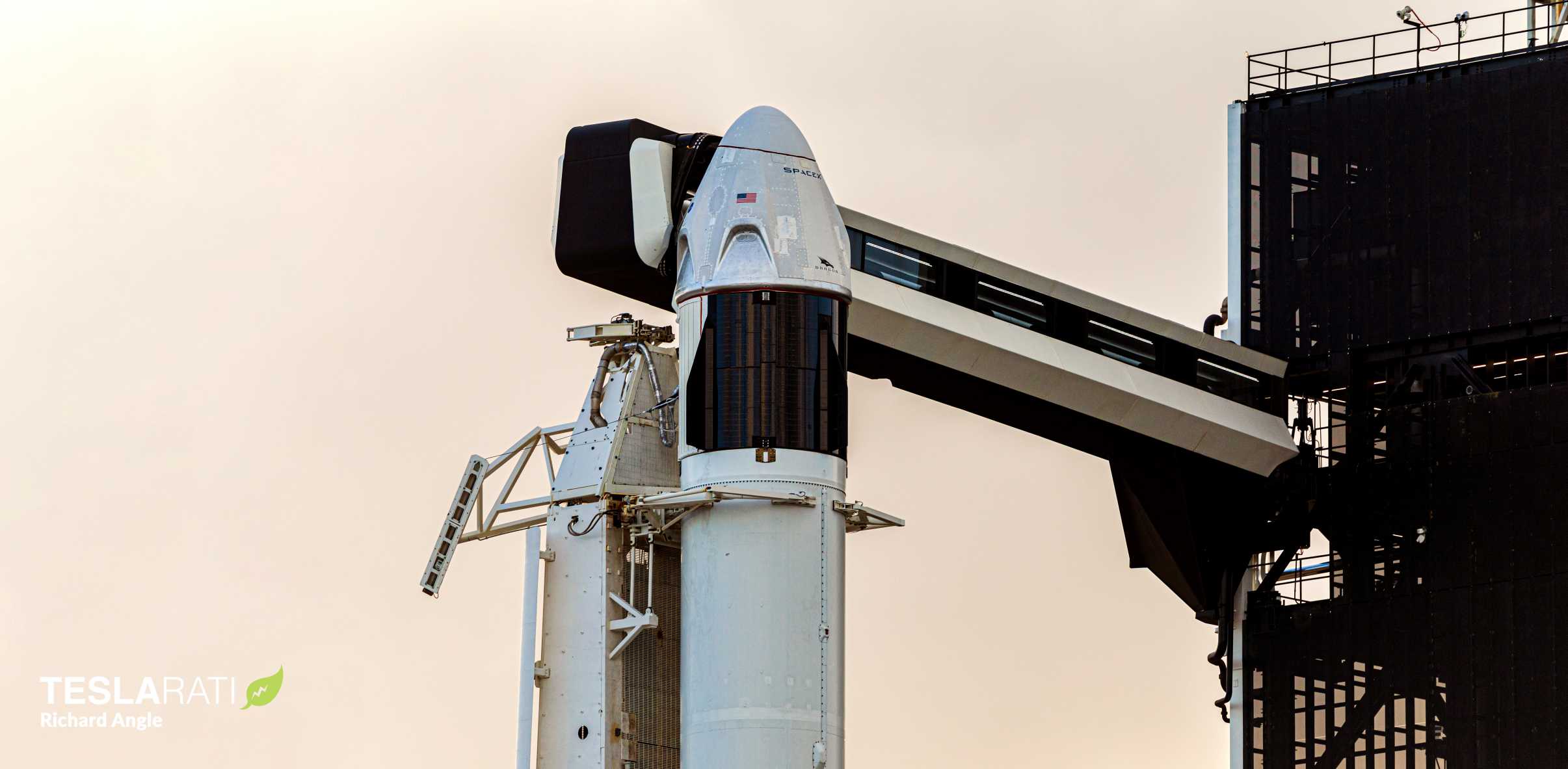
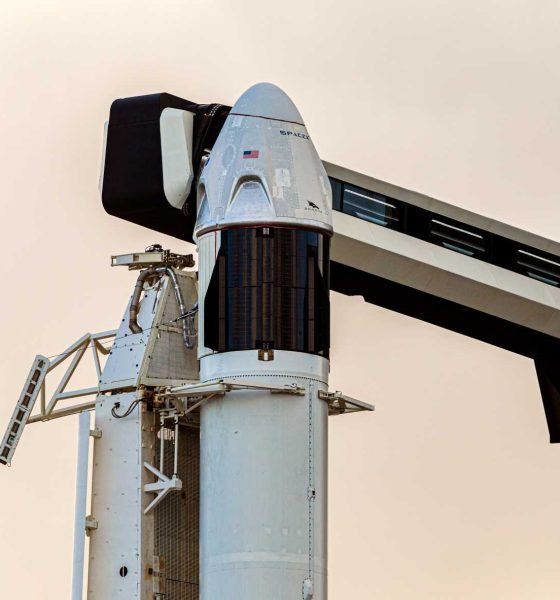
News
SpaceX’s NASA astronaut launch debut jumps its place in line, now up next
According to NASASpaceflight.com reporter Michael Baylor, SpaceX’s Starlink-7 satellite launch has been indefinitely delayed due to drone ship constraints, meaning that the company’s Crew Dragon astronaut launch is now up next.
As a result, SpaceX’s next orbital launch has been delayed by at least eight days. In return, however, that launch will arguably be the most important in the company’s 18-year history, (hopefully) marking the biggest step by far SpaceX has taken towards its main goals of democratizing spaceflight and enabling the sustainable, permanent settlement of Mars. Known as Demonstration Mission 2 (Demo-2), it will simultaneously be the first crewed launch under NASA’s Commercial Crew Program (CCP) and SpaceX’s first astronaut launch ever and is scheduled to lift off no earlier than (NET) 4:33 pm EDT (20:33 UTC), May 27th.
Formerly scheduled to launch no earlier than (NET) May 7th, 17th, 18th, and 19th after a number of technical and weather-related delays, SpaceX’s 8th 60-satellite Starlink launch has now been delayed until sometime after Crew Dragon’s late-May inaugural astronaut launch. According to NASASpaceflight and speculated about in-depth on unofficial forums in the days prior, the schedule swap decision was made due to constraints in SpaceX’s drone ship. While simple on the face of things, the change does reveal a bit of the hidden strategy behind SpaceX’s management of both its rocket fleet and the ships that recover them.
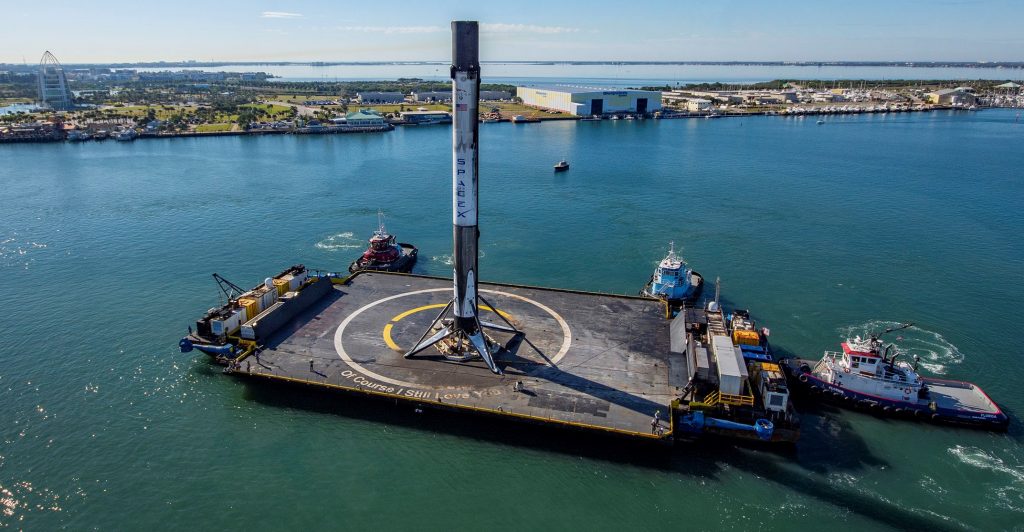
Compounded by multiple largely unrelated delays, including weather in the planned booster and fairing landing zones, the Starlink-7/Demo-2 launch swap was caused by the simple fact that SpaceX only has one operational drone ship on the East Coast. The company coincidentally began sea trials with a second drone ship the very same day that Of Course I Still Love You (OCISLY) headed out to sea to catch Starlink-7’s Falcon 9 booster. However, that second ship has been extensively upgraded and will likely take several weeks of sea trials before it can be declared ready for its first East Coast rocket recovery attempt.
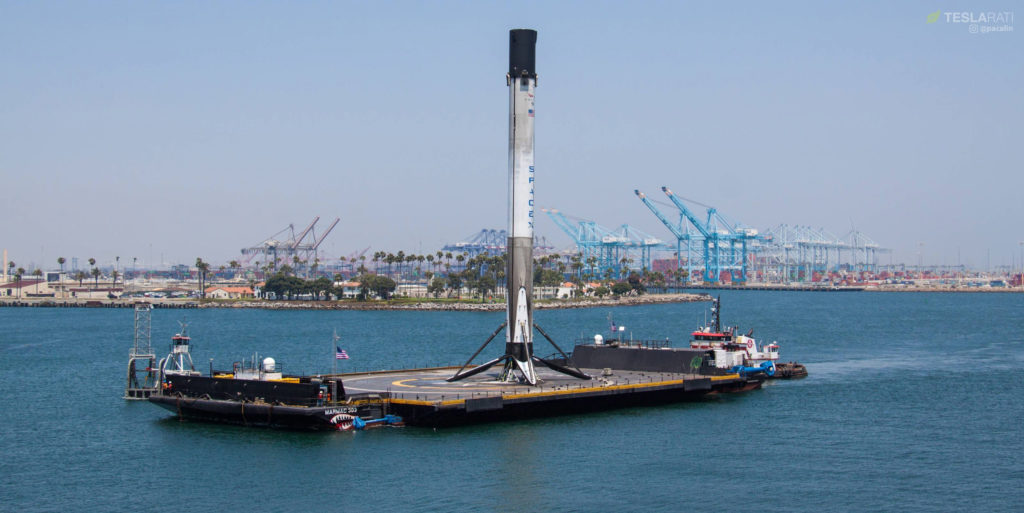
For each drone ship booster landing, it takes at least a week for the ship to be towed several hundred miles downrange to the recovery zone and at least as long to return to port. Add in the time required to safe and secure a landed Falcon 9 or Heavy booster, navigate sea states to prevent damage to – or the outright loss of – that booster, and the work needed to safely lift it off the drone ship’s deck onto dry land and it can easily be 9-10 days before a drone ship is ready for another landing.
At the same time, SpaceX’s turnaround record is about eight days between booster landings. Had SpaceX persevered and attempted to launch Starlink-7 on May 19th and Crew Dragon’s inaugural astronaut launch on May 27th, it’s possible that things would have worked out, with both booster landings occurring on schedule on the same drone ship. However, given just how much of a priority Crew Dragon Demo-2 is compared to an internal Starlink launch and a tropical storm threatening to delay Starlink-7’s launch and landing even further, SpaceX clearly decided that it just wasn’t worth the risk.
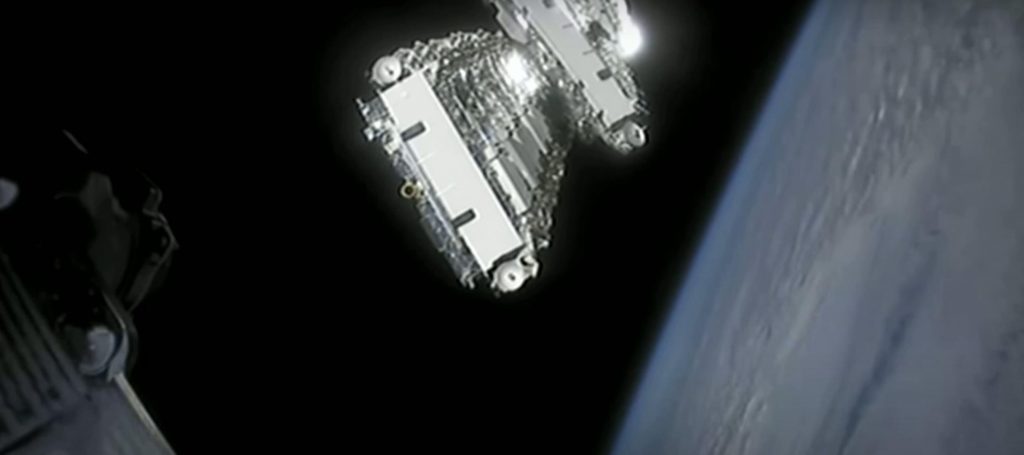
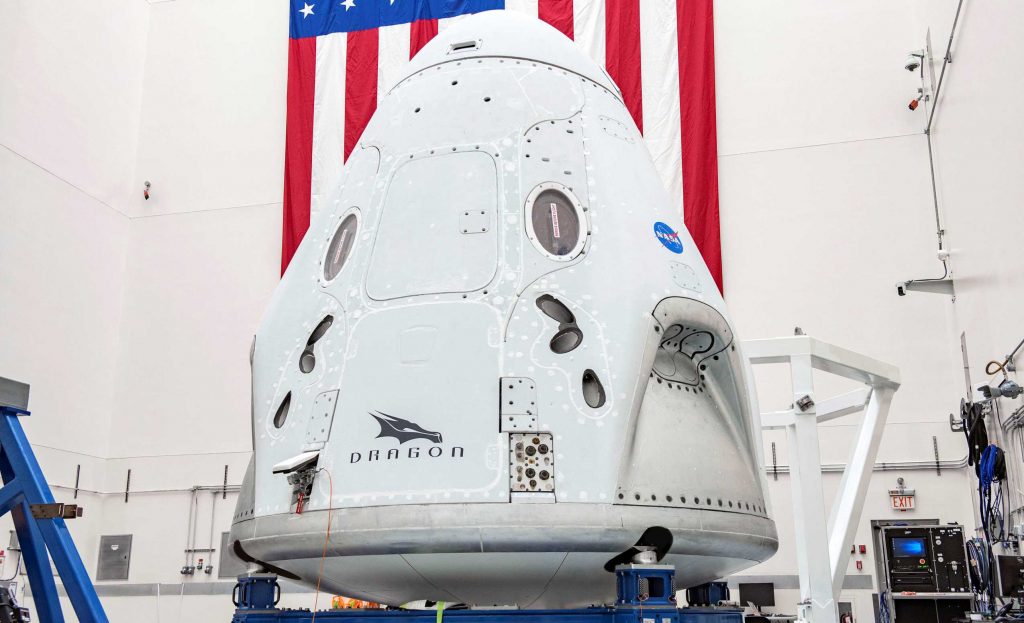
Given the extraordinary importance of Demo-2, set to be the first time the United States has launched its own astronauts into orbit in almost nine years, it’s not exactly surprising that SpaceX has chosen conservatism this time around and prioritized its inaugural NASA astronaut launch. According to Spaceflight Now, the Crew Dragon capsule assigned to SpaceX’s inaugural NASA astronaut launch – pictured above – actually joined the new Falcon 9 rocket that will launch it at Pad 39A on May 15th. Now fully fueled with liquid hydrazine and nitrogen tetroxide, the spacecraft could be mated with Falcon 9’s upper stage at any moment (if it hasn’t been already).
Once fully assembled, Falcon 9 booster B1058, a new Falcon 9 upper stage, Crew Dragon capsule C206, and an expendable trunk section will be rolled horizontally out to Kennedy Space Center (KSC) Pad 39A to perform a crucial pre-launch static fire test. Rollout and static fire operations could begin at any point within the next few days. It remains to be seen whether drone ship OCISLY will remain in the Atlantic Ocean or head back to Port Canaveral before departing again to catch booster B1058.

News
Tesla FSD fleet is nearing 7 billion total miles, including 2.5 billion city miles
As can be seen on Tesla’s official FSD webpage, vehicles equipped with the system have now navigated over 6.99 billion miles.

Tesla’s Full Self-Driving (Supervised) fleet is closing in on almost 7 billion total miles driven, as per data posted by the company on its official FSD webpage.
These figures hint at the massive scale of data fueling Tesla’s rapid FSD improvements, which have been quite notable as of late.
FSD mileage milestones
As can be seen on Tesla’s official FSD webpage, vehicles equipped with the system have now navigated over 6.99 billion miles. Tesla owner and avid FSD tester Whole Mars Catalog also shared a screenshot indicating that from the nearly 7 billion miles traveled by the FSD fleet, more than 2.5 billion miles were driven inside cities.
City miles are particularly valuable for complex urban scenarios like unprotected turns, pedestrian interactions, and traffic lights. This is also the difference-maker for FSD, as only complex solutions, such as Waymo’s self-driving taxis, operate similarly on inner-city streets. And even then, incidents such as the San Francisco blackouts have proven challenging for sensor-rich vehicles like Waymos.
Tesla’s data edge
Tesla has a number of advantages in the autonomous vehicle sector, one of which is the size of its fleet and the number of vehicles training FSD on real-world roads. Tesla’s nearly 7 billion FSD miles then allow the company to roll out updates that make its vehicles behave like they are being driven by experienced drivers, even if they are operating on their own.
So notable are Tesla’s improvements to FSD that NVIDIA Director of Robotics Jim Fan, after experiencing FSD v14, noted that the system is the first AI that passes what he described as a “Physical Turing Test.”
“Despite knowing exactly how robot learning works, I still find it magical watching the steering wheel turn by itself. First it feels surreal, next it becomes routine. Then, like the smartphone, taking it away actively hurts. This is how humanity gets rewired and glued to god-like technologies,” Fan wrote in a post on X.
News
Tesla starts showing how FSD will change lives in Europe
Local officials tested the system on narrow country roads and were impressed by FSD’s smooth, human-like driving, with some calling the service a game-changer for everyday life in areas that are far from urban centers.

Tesla has launched Europe’s first public shuttle service using Full Self-Driving (Supervised) in the rural Eifelkreis Bitburg-Prüm region of Germany, demonstrating how the technology can restore independence and mobility for people who struggle with limited transport options.
Local officials tested the system on narrow country roads and were impressed by FSD’s smooth, human-like driving, with some calling the service a game-changer for everyday life in areas that are far from urban centers.
Officials see real impact on rural residents
Arzfeld Mayor Johannes Kuhl and District Administrator Andreas Kruppert personally tested the Tesla shuttle service. This allowed them to see just how well FSD navigated winding lanes and rural roads confidently. Kruppert said, “Autonomous driving sounds like science fiction to many, but we simply see here that it works totally well in rural regions too.” Kuhl, for his part, also noted that FSD “feels like a very experienced driver.”
The pilot complements the area’s “Citizen Bus” program, which provides on-demand rides for elderly residents who can no longer drive themselves. Tesla Europe shared a video of a demonstration of the service, highlighting how FSD gives people their freedom back, even in places where public transport is not as prevalent.
What the Ministry for Economic Affairs and Transport says
Rhineland-Palatinate’s Minister Daniela Schmitt supported the project, praising the collaboration that made this “first of its kind in Europe” possible. As per the ministry, the rural rollout for the service shows FSD’s potential beyond major cities, and it delivers tangible benefits like grocery runs, doctor visits, and social connections for isolated residents.
“Reliable and flexible mobility is especially vital in rural areas. With the launch of a shuttle service using self-driving vehicles (FSD supervised) by Tesla in the Eifelkreis Bitburg-Prüm, an innovative pilot project is now getting underway that complements local community bus services. It is the first project of its kind in Europe.
“The result is a real gain for rural mobility: greater accessibility, more flexibility and tangible benefits for everyday life. A strong signal for innovation, cooperation and future-oriented mobility beyond urban centers,” the ministry wrote in a LinkedIn post.
News
Tesla China quietly posts Robotaxi-related job listing
Tesla China is currently seeking a Low Voltage Electrical Engineer to work on circuit board design for the company’s autonomous vehicles.

Tesla has posted a new job listing in Shanghai explicitly tied to its Robotaxi program, fueling speculation that the company is preparing to launch its dedicated autonomous ride-hailing service in China.
As noted in the listing, Tesla China is currently seeking a Low Voltage Electrical Engineer to work on circuit board design for the company’s autonomous vehicles.
Robotaxi-specific role
The listing, which was shared on social media platform X by industry watcher @tslaming, suggested that Tesla China is looking to fill the role urgently. The job listing itself specifically mentions that the person hired for the role will be working on the Low Voltage Hardware team, which would design the circuit boards that would serve as the nervous system of the Robotaxi.
Key tasks for the role, as indicated in the job listing, include collaboration with PCB layout, firmware, mechanical, program management, and validation teams, among other responsibilities. The role is based in Shanghai.
China Robotaxi launch
China represents a massive potential market for robotaxis, with its dense urban centers and supportive policies in select cities. Tesla has limited permission to roll out FSD in the country, though despite this, its vehicles have been hailed as among the best in the market when it comes to autonomous features. So far, at least, it appears that China supports Tesla’s FSD and Robotaxi rollout.
This was hinted at in November, when Tesla brought the Cybercab to the 8th China International Import Expo (CIIE) in Shanghai, marking the first time that the autonomous two-seater was brought to the Asia-Pacific region. The vehicle, despite not having a release date in China, received a significant amount of interest among the event’s attendees.








